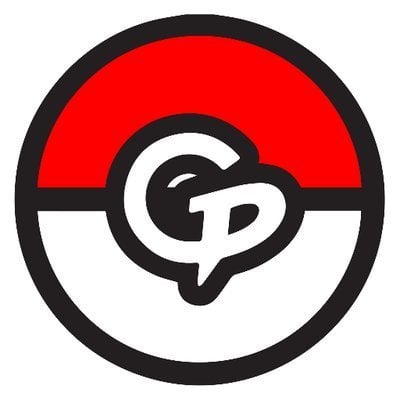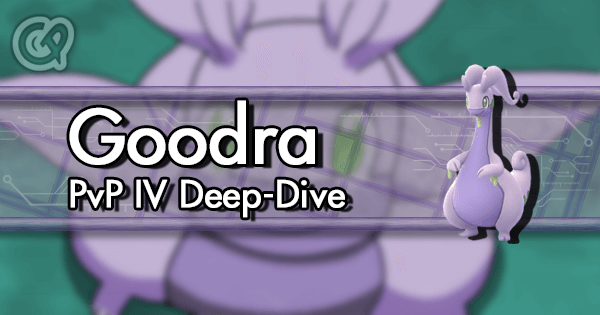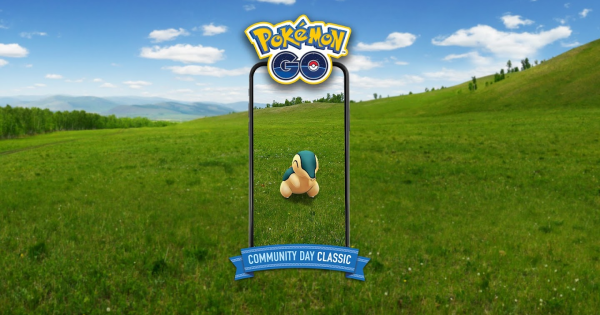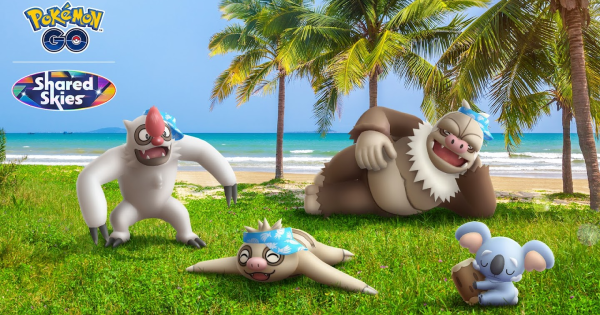The CP formula is weighted towards attack. Having a little lower attack will allow for a greater combined increase in defense*stamina while remaining at close to the same CP. Generally speaking, as far as can be generalized, the lower attack and higher defense*stamina will provide a little higher TDO.
Is IV relevant in Great/Ultra Leagues?
Question A:
If I have two pokemons (same pokemon with same move set. But different levels):
CP1500 IV 0%
CP1490 IV 100%
Wich is better to use in great League?
Question B:
Same pokemons/move set , but with different IV distribution:
CP1500 (atk 15, def 0, sta 0)
CP1500 (atk 0, def 15, sta 15)
Wich one would be better to use in great league? Or are they equal?
I assume same answers applies to Ultra league, right?
Answers
What Pipjay said, with the following caveat.
IVs are added to base statistics to determine final statistics. Gengar has a crazy high base attack, with low defense and stamina. Blissey has a crazy high stamina, with low attack and defense. So you can use the IVs of the individual pokemon to partially balance out these discrepancies. My guess (not certain, but pretty confident) is that a 0 attack 15 sta/def Gengar would beat a 15 attack 0 sta/def Gengar at the same CP, and will do more total damage against almost anything, but it's a small effect. Likewise, a 0 stamina 15 att/def Blissey will fight better than a 15 stamina 0 att/def blissey at the same CP, and will do more total damage against anything. Mind you, Blissey ain't great at PvP - this is just an illustrative example.
Some months ago I caught a 0 stamina 15 attack 15 defense Wailmer. This one should be the best possible Wailmer in PvP, but it's also likely that Wailmer/Wailord isn't that great in PvP to begin with.
This is one of those things that will be worked out after all the gross details of PvP are mastered. Additionally, what is the ideal stat balance for a capped CP league, for a generic pokemon - that's still an open question. I don't believe that the simple formula of defense times stamina = tankiness is accurate, just a rough guess. Actual tankiness depends on doing more of the opponent's % hit points per second than they do to you, not on the simple product of defense and stamina. This is particularly true since defense affects damage nonlinearly (the actual term in the damage equation is attack/defense - double the attack double the damage, but defense has an inverse relationship that is perforce nonlinear, making modeling much more difficult. I know this well, because I'm a physicist specializing in nonlinear dynamics.)
Sorry for the long post, but the short answer is that nobody knows, but best guess is that stamina and defense are undervalued by the CP formula, so 'buying' more of them at a given CP will make the pokemon stronger, at least to a point.
I don't think you are right. The TDO basic formula is (somewhat simplified, as actual HP doesn't start with 0, but is linear still) ATK*DEF*STA and this is perfectly linear. The nonlinearity enters only when we take into account that the damage comes only in integers and the moveset cycle will have spikes due to charge attacks.
And, as was intuitively obvious to me, and has actually been proven as a theorem by some crazy people here, TDO is the one and only performance measurement of Pokemon against neutral matchups.
https://pokemongo.gamepress.gg/tdo-how-calculate-pokemons-ability
So as far as the stats go, there's no nonlinearity here.
You're both a little right. Even ignoring the floor function and the discrete nature of the inputs, there is an inherent nonlinearity introduced when dividing by defense. It's math.
Look at the curve of y = x. Very linear. Now look at the curve of y = 1/x. Not linear at all. 'Nuff said.
"The TDO basic formula is (somewhat simplified, as actual HP doesn't start with 0, but is linear still)"
See, there's the issue. 'Somewhat simplified' in this case means has been linearized. It's not the exact calculation, it's a model, just like modeling DPS*DPE is a measure of the effectiveness of a Charged attack. The model is linear in DPS and DPE, but the actual effects of the charged attack are not.
@gluglumaster:
See, that's what I meant by "damage comes in integers".
@aeronaut63:
I explicitly stated that all this gets non-linear once moveset cycle comes into play.
There's no nonlinearity in dividing by defense, because the TDO function has no division by defense. Or, to put it another way - the TDO theorem proves that the initial DPS / (DEF*HP) formula is easily simplified to a linear TDO formula to calculate how a given Pokemon will do in a matchup. It's not an approximation model.
Also, you missed the point - by "simplified" I meant that HP is not counted from 0 against STA,
I think you and the other people in discussion are using 'tankiness' in two different ways - most use it to mean how many hits a Pokemon can take before dying, or how long it takes to defeat, while what you are referring to is a sort of normalized DPS, and this correlates well with ATT * DEF * STAM, rather than DEF * STAM. These are obviously simplifications, but they are in a sense the 'best' score we can use that is based only on base stats has this level of simplicity.
As far as I can tell, the ideal IV balance for ANY Pokemon is 0 atk, 15 def, 15 hp. You can come to this conclusion using a few basic facts:
- TDO is the determining factor of how good a Pokemon is in PvP. Of course, base typing and move typing also matter, but in general, higher TDO means a better Pokemon.
- TDO is proportional to the product of a pokemon's 3 stats (atk * def * hp). In other words, if a Pokemon has twice the atk stat of another, it will do twice the damage per attack, and thus twice the TDO. If it has twice the defense, it will take half the damage of the other and thus last twice as long, and have twice the TDO. If it has twice the HP, it will last twice as long and have twice the TDO. This does not account for rounding, but this is essentially how it works. TDO = k1 * atk * def * hp.
- CP is equal to the product of a pokemon's attack stat, the square root of it's defense and hp, and the square of the CP multiplier for the pokemon's level, all divided by 10. CP = (CPM ^2 * atk * √(def * hp)) / 10
From these 2 equations, you can see that increasing the attack stat of a Pokemon will have a large impact on it's CP (as attack is weighted as much as def and hp combined), but a small impact on it's TDO (as all 3 stats are weighted equally). For example, let's say we have 2 Pokemon: one with 100 attack, 200 def, and 200 hp, and one with 200 attack, 100 def, and 100 hp. these 2 Pokemon will always have the same CP. CP1 = (CPM ^ 2 * 100 * √(200 * 200)) / 10. CP2 = (CPM ^ 2 * 200 * √(100 * 100)) / 10. CP1 = CP2. But the TDO for the first one will be twice as much as the second. This all indicates that maximizing the def and hp, and minimizing the atk will yield the highest TDO at a given CP. So not only are defensive Pokemon ideal, but also 0/15/15 IVs are ideal.
I want to reiterate that this is just theoretical. In practice movesets and typing are incredibly important. This is why, for instance, blissey is not good in PvP. It should have great TDO but it's moves are terrible in the PvP format. Also, this does not account for the discrete level options and therefore discrete CP multipliers. If you could choose your CPM at will so that your Pokemon could have literally any CP you desire, then a 0/15/15 Pokemon would be ideal, with a CPM such that it's CP is right at the maximum. In practice this is obviously not possible, so getting as close to the CP max as possible is ideal. But the defensive stats should still be given priority. If a 0/15/15 gets you to 1480 CP, then maybe a 6/15/15 would get you to almost 1500. This would be ideal.
Sorry for the long post and for getting too in depth with the math, but I just wanted to clarify this.
"- TDO is proportional to the product of a pokemon's 3 stats (atk * def * hp). In other words, if a Pokemon has twice the atk stat of another, it will do twice the damage per attack, and thus twice the TDO. If it has twice the defense, it will take half the damage of the other and thus last twice as long, and have twice the TDO. If it has twice the HP, it will last twice as long and have twice the TDO. This does not account for rounding, but this is essentially how it works. TDO = k1 * atk * def * hp."
No. This is simply wrong. Further, if TDO is simply a product of three things, all of which are constrained by the CP formula, you're in a highly nonlinear regime.
Look at the attack formula, and keep everything fixed except attack and defense. To maximize damage, you take the partial derivative with respect to attack, and since the function is linear in attack, the output is a constant. But to maximize damage against a particular defense, you take the partial derivative of the defense, which is -1/(Def^2). Both 1/x and 1/x^2 are nonlinear, hence nonlinearities.
Increasing the defense increases the tankiness, but not in a smooth way. If defense is low, the increase is big. If defense is high, the increase is smaller. That is a fundamental nonlinearity.
I get that this is advanced mathematics. If you don't get it the first time, don't feel bad, but could you all please stop putting wrong information out there?
Until you can follow this paper: https://elite4insider.com/pokemon-go-battle-calculator/WeaveDamageV4.pdf,
you should just listen to the people who can. Even that white paper makes approximations that are problematic.
For a simple comparison between Pokemon with given IVs that are powered up to the maximum level before exceeding the cap, the best "prediction score" that I know of is CPM^3(bAtt + AttIV) * (bDef + DefIV) * (bStam + StamIV). This might not be the case all the time; there might be a situation where a Pokemon hits more of its critical breakpoints against its relevant PvP matchups with a higher attack IV but lower stat product than a Pokemon of the same species with lower Attack and higher stat product.
As far as which IV combination is the best, there is no simple rule that will work every time. If you allow for continuously distributed CPM values and you're working with a Pokemon whose max CP exceeds that cap, you'll find that your TDO predictor is proportional to (Defense * Stamina) ^ 0.25 * Attack ^ -0.5. If you're not concerned about preserving ratios between these scores or comparing to mons with max cp under cap, you can just use Defense * Stamina / Attack^2 for comparisons. From this we can see having lower attack and higher bulk is better in capped leagues, and so you might guess that (15, 0, 15) (s, a, d) is the best IV combination for capped leagues. This is what I thought for awhile, but it's more complicated than that. I wrote a program that goes through all the IV combinations and finds the best one based on stat product (I know there are ways to increase the efficiency, I just haven't bothered with it yet since it runs fast anyway), and here are some examples of optimal IVs (for Great League):
Altaria: (15, 0, 14) @ L29.0, 1497 CP
Azumarill: (15, 8, 15) @ L40.0, 1500 CP
Umbreon: (15, 0, 15) @ L27.5, 1500 CP
Blissey: (15, 0, 11) @ L21.5, 1500 CP
Skarmory: (14, 0, 12) @ L27.5, 1500 CP
For question A, I would say probably the 0%, though I'm virtually certain neither will be optimal. For question B, I can say with near certainty that the full bulk IVs with no attack IVs is the better of the two. Another thing I did was write some code that evaluates a particular IV set on a given species in a given league by comparing the stat product of the given mon to the stat product of the optimally IV'd mon of the same species for that league, returning the ratio as a percent. Typically, you will be looking at a 5-10% fluctuation in stat product, so I'd predict about this much variation in performance due to IVs, which is about the same as what you would expect in raids and gym battles as well.









